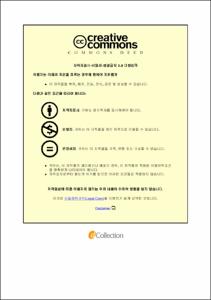명태 산업 가치사슬 분석에 관한 연구
- Abstract
- The purpose of this study is to derive the limitations and improvement plans of pollock industry by analyzing the process from the production of raw material to the consumer from the value chain perspective. pollock Industry Value Chain Efficiency Analysis shows that pollock industry managers located at different stages in the value chain differ in efficiency. The DEA analysis showed that the technology efficiency average(2013-2017) achieved relatively high efficiency in wholesale and commodity brokerage(0.9401) and primary wholesale(0.9390).
The technology efficiency in the food processing industry, which is in the processing stage, was high in both pure technical efficiency and scale efficiency with surimi product(0.9293) and pickled pollock roe (0.9241). And scale efficiency showed relatively inefficient results.
The surimi manufacturing industry has been analyzed to achieve the highest level of automation technology(0.9527) among the food manufacturing industry by achieving the highest level of automation through large-scale equipment investment. The production of pickled pollock roe was found to have the highest scale efficiency(0.9828) among the value chains due to its relatively stable procurement structure and global demand for pickled pollock roe(decreased demand in Japan).
The value chain structure of pollock industry is a structure that delivers value to consumers through five core processes(raw material production and supply, raw material distribution, processing, distribution, and consumption). In the raw material production and supply stages, the unified raw material supply structure and the deactivation of import channels appeared to be the limiting factors. In the raw material distribution stage, raw material supply instability was analyzed as a constraint. In the processing stage, the industrial structure, price competition-oriented structure, labor-dependent industrial structure, lack of product innovation and market development capacity, and inactive consumer communication were analyzed as problems. In the distribution stage, the domestic market erosion of processed pollack products occurs. In the consumption stage, low-age consumption(under 20s) consumption declined and failure to respond to consumer needs was analyzed.
The value-added portion of pollock industry is represented by raw material production stage 19.0%, raw material distribution and supply stage 1.0%, processing stage 49.9%, distribution (wholesale) stage 7.0%, and consumption(retail) stage 23.1% showed a high proportion of value added in raw material production and processing. On the other hand, the pollock Industry(dried pollock product) revenue distribution structure includes production 7.2%, raw material distribution and supply 4.9%, processing 30.7%, distribution(wholesale) 13.3%, and consumption(retail) 43.9%.
- Issued Date
- 2020
- Awarded Date
- 2020. 2
- Type
- Dissertation
- Publisher
- 부경대학교
- Affiliation
- 부경대학교 대학원
- Department
- 대학원 해양수산경영학과
- Advisor
- 장영수
- Table Of Contents
- Ⅰ. 서론 1
1. 연구배경 및 목적 1
2. 연구의 범위 및 방법 3
3. 연구의 내용과 체계 5
Ⅱ. 명태 산업 구조와 현황 7
1. 세계 명태 산업 7
2. 국내 명태 산업 24
Ⅲ. 이론적 배경 및 선행연구 32
1. 가치사슬 분석 32
2. 효율성 분석 37
3. 선행연구 43
Ⅳ. 연구 설계 56
1. 연구 범위 및 대상 56
2. 연구 문제 57
3. 조사방법 및 개요 59
Ⅴ. 실증분석 64
1. 명태 산업 가치사슬 효율성 분석 64
2. 명태 산업 가치사슬 분석 89
Ⅵ. 결론 147
1. 연구 결과 요약 147
2. 연구 시사점 및 한계점 150
- Degree
- Doctor
- Files in This Item:
-
-
Download
 명태 산업 가치사슬 분석에 관한 연구.pdf
기타 데이터 / 2.48 MB / Adobe PDF
명태 산업 가치사슬 분석에 관한 연구.pdf
기타 데이터 / 2.48 MB / Adobe PDF
-
Items in Repository are protected by copyright, with all rights reserved, unless otherwise indicated.